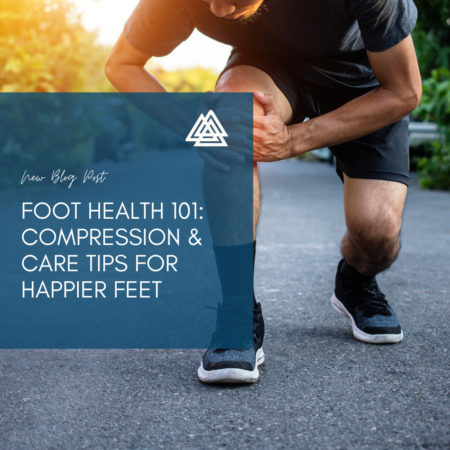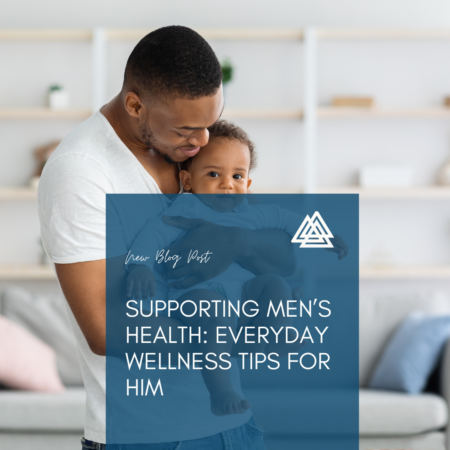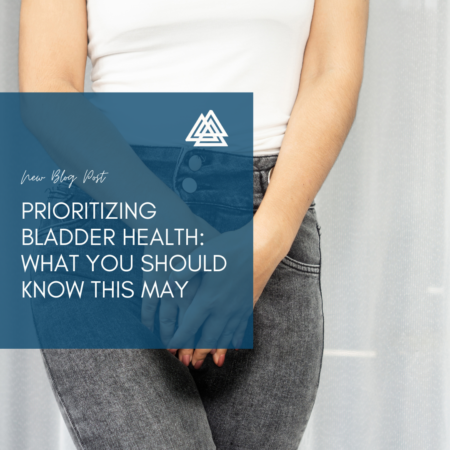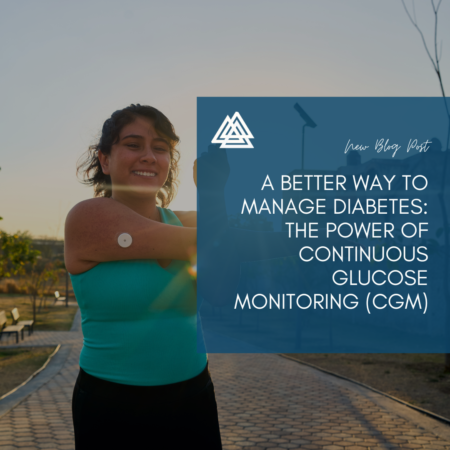Prism Post
 Summer is a season filled with sunshine, travel plans, and outdoor fun—but for those managing urinary incontinence, it can also bring unique challenges. From higher temperatures to longer days away from home, staying comfortable and confident takes a bit of extra planning.
Summer is a season filled with sunshine, travel plans, and outdoor fun—but for those managing urinary incontinence, it can also bring unique challenges. From higher temperatures to longer days away from home, staying comfortable and confident takes a bit of extra planning.
At Prism, we believe that managing incontinence shouldn’t limit your lifestyle. With the right products, education, and support, you can enjoy everything summer has to offer—without worry.
💧 Understanding Incontinence
Urinary incontinence is more common than many people realize, affecting both men and women of all ages. Whether it’s stress-related leaks, urgency, or overflow incontinence, it’s nothing to be embarrassed about—and it’s certainly not something you have to navigate alone.
☀️ Summer Tips for Managing Incontinence
1. Stay Hydrated (the Smart Way)
It may seem counterintuitive, but limiting fluids too much can actually make incontinence worse. Instead, sip water consistently throughout the day and limit bladder irritants like caffeine, alcohol, and carbonated beverages.
2. Choose Breathable, Comfortable Products
Look for moisture-wicking and discreet incontinence wear that provides both protection and comfort during warmer weather. Breathable materials can help reduce skin irritation caused by heat and humidity.
3. Be Prepared On-the-Go
Keep a small travel kit with a few extra incontinence pads, wipes, and a change of clothing when heading out for the day. This simple step can make outings feel more relaxed and worry-free.
4. Protect Your Skin
Frequent exposure to moisture can lead to skin irritation or breakdown. Using barrier creams and gentle cleansers can help maintain healthy skin and prevent discomfort.
5. Talk to Your Healthcare Provider
If your symptoms change or become more frequent, don’t hesitate to speak with your provider. There may be additional treatment options or therapies available to support your needs.
🛒 Products That Support You—Every Step of the Way
At One By Prism, you’ll find a range of incontinence care products that are discreet, effective, and designed for daily life. We offer:
✅ Protective underwear & absorbent pads
✅ Skin barrier creams & cleansing wipes
✅ Bed pads & discreet disposal bags
✅ Bladder health supplements & support
💬 Additional Support & Resources
Need help navigating incontinence care or looking for guidance on available coverage and services? Visit www.prism-medical.com for patient-friendly resources, educational support, and information about how we help connect patients with the care and products they need.
You deserve to feel confident, comfortable, and in control—this summer and every season.
 June is National Men’s Health Month—Support Stronger Steps for Every Stage of Life
June is National Men’s Health Month—Support Stronger Steps for Every Stage of Life
Whether you’re on your feet all day for work, managing a chronic condition like diabetes, or just starting to notice a bit more soreness and swelling than usual, foot health is something that deserves more attention than it often gets.
In honor of Men’s Health Month, we’re highlighting simple, practical ways to protect your foundation—because healthy feet support a healthier life.
At Prism, we’re here to help patients and providers stay one step ahead with trusted products, helpful education, and reliable support.
👣 Why Foot Health Matters
Your feet carry you through every step of your day—so when something’s off, the impact can be felt throughout your whole body. Poor foot health can lead to:
Swelling and discomfort
Poor circulation
Increased fall risk
Infection, skin breakdown, and mobility limitations
For individuals with diabetes, lymphedema, or circulatory concerns, proactive foot care is even more critical.
🦶 Top Foot Health Tips from the Experts
1. Prioritize Circulation
If you deal with swelling, tired legs, or prolonged sitting/standing, graduated compression socks can help improve blood flow, reduce fatigue, and support better daily comfort.
2. Inspect Feet Daily
Look for redness, cuts, blisters, or changes in color—especially if you have diabetes or neuropathy. Early detection of issues can prevent serious complications.
3. Keep Feet Clean and Moisturized
Wash and dry feet thoroughly every day, and apply a gentle moisturizing cream to prevent cracking or dryness (but avoid applying lotion between the toes).
4. Wear Proper Footwear
Supportive, breathable shoes that fit well can prevent pressure points and injury. If needed, talk to your provider about orthotic insoles or diabetic-friendly footwear.
5. Don’t Ignore Pain
Foot pain isn’t something to push through—it’s a sign that something may be off. If discomfort persists, consult your healthcare provider.
🛍️ Supportive Products from One By Prism
Looking for products to help you or a loved one stay mobile and comfortable? Shop trusted foot health essentials at www.onebyprism.com, including:
✅ Compression socks (including Sigvaris and PowerStep brands)
✅ Moisturizing foot creams & skin barrier ointments
✅ Diabetic foot care solutions
✅ Braces and insoles for added support
💬 Need More Guidance?
Whether you’re managing a chronic condition or simply looking to improve everyday comfort, Prism is here to help. Visit www.prism-medical.com for more patient-focused resources, educational tools, and prescription assistance options.
Take care of your feet—they take care of you.
 In recognition of Men’s Health Month & Father’s Day – June
In recognition of Men’s Health Month & Father’s Day – June
June is Men’s Health Month—a time to raise awareness and empower men to take charge of their health. It’s also a month we celebrate fathers, grandfathers, brothers, and all the men in our lives who work hard and care deeply, often putting others before themselves.
At Prism, we’re here to support men’s health not just in June, but all year long. Whether you’re shopping for yourself or for someone you love this Father’s Day, now is the perfect time to prioritize wellness with practical tips and trusted over-the-counter (OTC) essentials.
🩺 5 Everyday Health Tips for Men
1. Don’t Skip Routine Checkups
Preventive care is key. Encourage the men in your life to stay up-to-date on physicals, screenings, and lab work. Early detection is one of the most powerful tools for managing long-term health.
2. Support Joint & Muscle Health
As we age, joint pain and muscle stiffness become more common—especially for active dads and those with labor-intensive jobs. Incorporating compression wear, joint support supplements, and pain relief creams can make a big difference in daily comfort and mobility.
3. Take Heart Health Seriously
Heart disease remains a leading cause of death among men. Small changes—like lowering sodium intake, staying active, and adding heart-healthy supplements—can help support cardiovascular wellness.
4. Address Bladder Health Head-On
Bladder and prostate issues are common but often under-discussed. Whether it’s mild incontinence or recovery after a procedure, discreet bladder support products can help men maintain dignity, confidence, and independence.
5. Get Better Sleep
Sleep is foundational to everything—energy, metabolism, mood, and immune health. If stress or discomfort are interfering with rest, look into OTC sleep aids, calming supplements, or nighttime pain relief options that can support deeper, more restorative sleep.
Visit www.prism-medical.com for other helpful resources on men’s health.
🛒 And shop Men’s Health Essentials at www.onebyprism.com
Support the men in your life with wellness solutions they can count on—delivered right to their door.
✅ Vitamins & supplements
✅ Compression socks & braces
✅ Bladder control products
✅ Pain relief sprays & patches
✅ Sleep support
✅ Foot & skin care for diabetic support
🎁 Father’s Day Reminder
Father’s Day is Sunday, June 16th! Consider creating a custom wellness care package for Dad, Grandpa, or any caregiver in your life to show them just how much their health matters, too.
Because when he feels better, he can do more of what he loves.
 As temperatures rise and the days grow longer, many of us look forward to getting outside and enjoying the fresh air. But for those living with lymphedema, warmer weather can bring added challenges—like increased swelling, discomfort, and skin irritation.
As temperatures rise and the days grow longer, many of us look forward to getting outside and enjoying the fresh air. But for those living with lymphedema, warmer weather can bring added challenges—like increased swelling, discomfort, and skin irritation.
At Prism, we understand the daily realities of lymphedema management, and we’re here to help you stay supported and comfortable all season long. With a little planning and the right tools, you can stay active and feel your best, even on the hottest days.
☀️ Why Warm Weather Can Worsen Lymphedema
Heat causes your blood vessels to expand, which can lead to more fluid collecting in the affected limbs. This may result in:
Increased swelling and heaviness
More discomfort or pain
Greater risk of skin breakdown or infection
But don’t worry—with the right care, you can keep symptoms under control while still enjoying the season.
💧 6 Warm Weather Tips for Managing Lymphedema
1. Stay Cool & Hydrated
Drink plenty of water and stay in air-conditioned spaces during the hottest parts of the day. Wear breathable, lightweight clothing to reduce overheating.
2. Keep Compression On (When Advised)
Compression garments help prevent fluid buildup, but they can be uncomfortable in the heat. Choose lightweight, moisture-wicking options designed for warmer climates, and talk to your healthcare provider if adjustments are needed.
3. Practice Good Skin Care
Warm weather can cause sweating and irritation. Clean and moisturize your skin daily to prevent infection, and watch for any signs of redness, rash, or dryness.
4. Avoid Heat Sources
Stay away from hot tubs, saunas, and sunbathing, which can increase swelling. Opt for cool showers or baths instead.
5. Elevate & Exercise
Gentle movement and elevation can encourage lymph flow. Low-impact activities like walking or swimming are great ways to stay active while supporting circulation.
6. Carry Essentials When Traveling
If you’re on the go, pack your compression garments, skin care products, and any medical supplies you regularly use—so you’re never caught unprepared.
Browse helpful lymphedema resources at www.prism-medical.com and shop Lymphedema Essentials at www.OneByPrism.com.
We offer a carefully selected range of products to help you manage lymphedema with confidence:
✅ Compression garments (socks, sleeves, wraps & more)
✅ Skin barrier creams for daily protection
✅ Wound care supplies to prevent and treat skin issues
✅ Hydration support and at-home care items
🌼 Take On the Season with Confidence
You deserve to enjoy life without lymphedema holding you back. With smart routines, quality care, and trusted support from Prism, you can feel more in control—no matter what the thermometer says.
Your comfort. Your care. Our commitment.
 As we move into May and spend more time outdoors, it’s common to experience minor scrapes, cuts, or post-surgical wounds that need proper attention. Whether you’re healing from an injury, managing a chronic condition, or caring for a loved one, wound care is an essential part of staying healthy and comfortable.
As we move into May and spend more time outdoors, it’s common to experience minor scrapes, cuts, or post-surgical wounds that need proper attention. Whether you’re healing from an injury, managing a chronic condition, or caring for a loved one, wound care is an essential part of staying healthy and comfortable.
At One By Prism, we’re here to make wound care simpler, safer, and more effective—with expert-backed products and helpful guidance to support every step of the healing journey.
🩹 Why Proper Wound Care Matters
Good wound care does more than speed up healing—it helps prevent infections, reduces scarring, and supports skin integrity. Even small wounds can lead to bigger complications if not treated properly, especially for individuals with diabetes, poor circulation, or fragile skin.
🧼 5 Essential Wound Care Tips
1. Clean the Wound Gently
Use a sterile saline rinse or wound cleanser to wash away debris and bacteria. Avoid using hydrogen peroxide or alcohol, which can damage healthy tissue.
2. Apply an Appropriate Dressing
Choose a dressing that keeps the wound moist but protected. Hydrocolloid and foam dressings are great for deeper wounds, while gauze and sterile bandages are ideal for minor cuts.
3. Change Dressings Regularly
Follow your healthcare provider’s instructions or change dressings when they become dirty or wet. Always wash your hands before and after changing a bandage.
4. Protect Surrounding Skin
Use barrier creams or silicone tape to protect the skin around the wound, especially if adhesives are used frequently.
5. Watch for Signs of Infection
Redness, swelling, pain, and discharge are signs a wound may be infected. Seek medical attention if symptoms worsen or don’t improve.
🛒 Trusted Wound Care Solutions from One By Prism
We carry a wide range of high-quality products to support your healing process, including:
✅ Antimicrobial dressings to prevent infection
✅ Foam and hydrocolloid dressings for moisture balance
✅ Sterile gauze, bandages, and tapes
✅ Wound cleansers and antiseptics
✅ Skin barrier creams and securement strips
🌼 Heal Wounds with Confidence This Spring
Whether you’re treating a minor injury or managing ongoing wound care, One By Prism is here to help. Our products are selected with care, delivered with compassion, and designed to give you peace of mind.
🛒 Explore our wound care collection at www.onebyprism.com
Your care. Your comfort. Our commitment.
– The One By Prism Team
 May is Bladder Cancer Awareness Month, making it the perfect time to shine a light on an often overlooked—but incredibly important—aspect of wellness: bladder health.
May is Bladder Cancer Awareness Month, making it the perfect time to shine a light on an often overlooked—but incredibly important—aspect of wellness: bladder health.
Whether you’re managing a chronic condition, recovering from a procedure, or simply looking to take a more proactive role in your care, supporting your bladder health is essential to living comfortably and confidently.
🧠 Why Bladder Health Matters
Your bladder is a vital part of your urinary system, working constantly to store and release waste from the body. But when things go wrong—from incontinence to bladder infections or cancer—the impact on daily life can be significant.
According to the Bladder Cancer Advocacy Network, bladder cancer is the 6th most common cancer in the U.S., with men over 55 being the most affected. But bladder health concerns aren’t limited to cancer—many people struggle with bladder leaks, urgency, or frequent urinary tract infections (UTIs), especially as they age.
🚻 Common Bladder Health Issues
Urinary incontinence (UI) – The loss of bladder control, often due to weakened pelvic muscles or nerve issues
Overactive bladder (OAB) – A frequent, sudden urge to urinate that may be difficult to control
UTIs – Infections that can irritate the bladder and cause pain or urgency
Bladder cancer – Often detected through early symptoms like blood in the urine or frequent urination
💛 How Prism Supports Bladder Health
At Prism, we believe everyone deserves compassionate, high-quality care—especially when it comes to something as personal as bladder health. That’s why we offer a wide range of discreet, effective, and reliable over-the-counter products to help you manage symptoms and improve quality of life:
✅ Incontinence supplies – Protective undergarments, pads, and discreet absorbent products
✅ Urological care essentials – Catheters, drainage bags, and hygiene supplies
✅ Skin barrier creams – Protect against irritation from leaks
✅ Bladder support supplements – Promote urinary tract health and function
Whether you’re caring for yourself or supporting a loved one, we’re here to make everyday care easier, more comfortable, and more empowering.
🌟 Small Steps for a Healthier Bladder
Stay hydrated (but limit caffeine and alcohol)
Maintain a healthy weight
Do pelvic floor exercises (like Kegels)
Don’t ignore the urge to go
Talk to your healthcare provider about any new or persistent symptoms
🛒 Shop Trusted Bladder Health Essentials
This month—and every month—One By Prism is proud to stand beside you with the tools and support you need to take charge of your bladder health.
🛍️ Shop now at www.onebyprism.com
Your health. Your comfort. Our commitment.
 May is a time to celebrate the strength, resilience, and health of women everywhere—and during Women’s Health Month, we’re shining a spotlight on one of the most important (and often overlooked) chapters in a woman’s health journey: the postpartum period.
May is a time to celebrate the strength, resilience, and health of women everywhere—and during Women’s Health Month, we’re shining a spotlight on one of the most important (and often overlooked) chapters in a woman’s health journey: the postpartum period.
Bringing a new life into the world is a beautiful and life-changing experience—but it also comes with physical, emotional, and hormonal shifts that deserve attention, compassion, and care.
🩺 Why Postpartum Care Matters
The weeks and months following childbirth are crucial for recovery. Mothers face a range of changes—from healing after delivery to navigating sleep deprivation and adjusting to new routines. Prioritizing postpartum care is not just about healing physically—it’s about supporting the whole person.
🌸 Essentials for Postpartum Support
At One By Prism, we understand the unique needs of new moms and offer a curated selection of postpartum essentials to help support your recovery and comfort:
✅ Pain relief and wound care: Support healing after vaginal or cesarean delivery with gentle and effective solutions
✅ Compression garments: Reduce swelling and promote circulation
✅ Bladder care products: Manage postpartum urinary changes with dignity and ease
✅ Skincare for sensitive areas: Soothe and protect with gentle creams and barrier products
✅ Breastfeeding support: From soothing gels to wearable breast pumps, support your journey your way
💛 Caring for the Caregiver
Postpartum care isn’t just about medical needs—it’s about emotional wellness, too. As friends, partners, and family members, we can honor the women in our lives by making sure they feel seen, supported, and encouraged to care for themselves during this time.
This Women’s Health Month, let’s celebrate the caregivers by caring for them.
🛒 Explore postpartum and wellness essentials at OneByPrism.com and help make recovery a little easier—for you or the new mom in your life.
 Living with diabetes can be overwhelming—but managing it doesn’t have to be. At Prism, we believe in empowering patients and healthcare providers with the tools they need to take control of diabetes care. One of the most impactful innovations in recent years is Continuous Glucose Monitoring (CGM).
Living with diabetes can be overwhelming—but managing it doesn’t have to be. At Prism, we believe in empowering patients and healthcare providers with the tools they need to take control of diabetes care. One of the most impactful innovations in recent years is Continuous Glucose Monitoring (CGM).
What is CGM?
Continuous Glucose Monitoring is a technology that tracks glucose levels in real time, 24/7. Unlike traditional fingerstick methods, CGM uses a small sensor placed under the skin to monitor glucose levels throughout the day and night. This data is transmitted to a device or smartphone app, giving patients and providers real-time insights into glucose trends and patterns.
Why CGM Matters
CGM has transformed how people manage diabetes by providing:
✅ Fewer fingersticks (or none at all, depending on the system)
✅ Real-time alerts for high and low blood sugar
✅ Improved glucose control with trend data and analytics
✅ Better-informed treatment decisions for patients and providers
✅ Enhanced quality of life through greater confidence and fewer surprises
For those with Type 1 or Type 2 diabetes, especially individuals who experience frequent highs and lows or are at risk for hypoglycemia, CGM can be a life-changing tool in day-to-day management.
How Prism Supports CGM Access
At Prism, we understand that navigating diabetes supplies, insurance coverage, and prescriptions can be a challenge. That’s why we’ve made it our mission to provide compassionate, hassle-free service to help patients get the CGM systems they need.
We offer:
Support with insurance verification and coverage
A dedicated team to assist with paperwork and provider coordination
Access to top CGM brands like Dexcom and FreeStyle Libre
Ongoing customer support to help patients stay on track
Ready to Get Started?
Whether you’re a patient ready to take control of your diabetes or a provider looking to simplify the process for your patients, Prism is here to help.
👉 Visit www.prism-medical.com to fill out the prescription form for CGM supplies and get started today. Our team is ready to walk you through every step of the way—because managing diabetes should feel empowering, not frustrating.
Better insight. Better outcomes. Better support—with Prism.
#DiabetesSupport #CGM #ContinuousGlucoseMonitoring #PrismCares #PatientEmpowerment #BloodSugarMonitoring #Dexcom #FreeStyleLibre #DiabetesAwareness #Prism
 At Prism, we are committed to raising awareness and providing compassionate support for individuals living with chronic conditions—one of which is Lymphedema, a condition that affects millions but often goes underdiagnosed and undertreated.
At Prism, we are committed to raising awareness and providing compassionate support for individuals living with chronic conditions—one of which is Lymphedema, a condition that affects millions but often goes underdiagnosed and undertreated.
What is Lymphedema?
Lymphedema is a condition characterized by persistent swelling, typically in the arms or legs, due to a buildup of lymphatic fluid. This occurs when the lymphatic system is damaged or obstructed, often as a result of cancer treatment, surgery, infection, or congenital abnormalities.
Common symptoms include:
Swelling in the limbs or other body parts
A heavy or tight sensation
Restricted range of motion
Skin thickening or recurring infections
While lymphedema has no cure, early intervention and proper management can greatly improve quality of life.
How Prism Supports Lymphedema Management
At Prism, we specialize in providing custom and off-the-shelf compression garments and supportive medical equipment to help manage lymphedema effectively. Our team works closely with patients and providers to ensure proper fit, comfort, and insurance support, creating a smoother path to care.
Our lymphedema solutions are: ✅ Designed for long-term comfort and support
✅ Backed by clinical expertise
✅ Customized to meet each patient’s specific needs
✅ Delivered with the guidance and care of our experienced team
Take the First Step Toward Relief
If you or your patient is in need of support for lymphedema management, we’re here to help.
👉 Visit www.prism-medical.com to complete our patient forms and begin the process of getting fitted for the right compression solutions. Our team will review the information and follow up with personalized guidance and next steps.
Because when it comes to your health, the right support makes all the difference.
#LymphedemaAwareness #CompressionCare #PrismCares #LymphaticHealth #PatientSupport #ChronicConditionManagement #Prism
 For individuals with chronic kidney disease (CKD) or end-stage renal disease (ESRD), dialysis is a lifesaving treatment that helps remove waste, excess fluids, and toxins from the blood when the kidneys can no longer function properly. Without dialysis, the body cannot maintain a healthy balance of electrolytes, fluids, and waste removal, leading to serious health complications.
For individuals with chronic kidney disease (CKD) or end-stage renal disease (ESRD), dialysis is a lifesaving treatment that helps remove waste, excess fluids, and toxins from the blood when the kidneys can no longer function properly. Without dialysis, the body cannot maintain a healthy balance of electrolytes, fluids, and waste removal, leading to serious health complications.
At Prism, we understand the importance of high-quality medical supplies for dialysis patients and healthcare providers. From catheter dressings to wound care, blood pressure monitors, and infection control products, we provide the essential tools needed to support dialysis treatment and improve patient outcomes.
What is Dialysis?
Dialysis is a medical treatment that mimics the filtering function of the kidneys. It removes waste, extra water, and harmful substances from the bloodstream to maintain a proper chemical balance in the body.
There are two primary types of dialysis:
1. Hemodialysis (HD)
✔ Blood is drawn from the body, filtered through a dialyzer (artificial kidney), and returned to the bloodstream.
✔ Performed at a dialysis center or at home with a trained caregiver.
✔ Typically needed 3-4 times per week, with sessions lasting 3-5 hours.
2. Peritoneal Dialysis (PD)
✔ Uses the body’s peritoneal membrane in the abdomen as a natural filter.
✔ Dialysis fluid is inserted into the abdomen to absorb toxins, then drained out.
✔ Can be done at home, allowing more flexibility and independence.
Essential Supplies for Dialysis Patients
Proper infection control, wound care, and monitoring are critical for dialysis patients. Prism provides high-quality medical supplies to support treatment and reduce complications.
1. Catheter & Access Site Care
✔ Antimicrobial dressings to protect against infections at access points.
✔ Sterile gauze and bandages for wound care and site management.
✔ Skin prep solutions to reduce bacteria and improve adhesive dressing adherence.
2. Infection Control & Hygiene Products
✔ Alcohol swabs and antiseptics to prevent infections at the catheter site.
✔ Gloves, masks, and sanitizing wipes to maintain hygiene during home dialysis treatments.
✔ Chlorhexidine prep wipes for pre-treatment site cleaning.
3. Wound Care for Dialysis Patients
✔ Pressure-relieving dressings to prevent skin breakdown and ulcers.
✔ Foam dressings and hydrogel pads to promote healing at access sites.
✔ Adhesive bandages and compression wraps for minor injuries and post-treatment care.
4. Monitoring & Home Health Tools
✔ Blood pressure monitors to track heart health and fluid retention.
✔ Glucose monitoring supplies for patients managing diabetes alongside kidney disease.
✔ Compression socks to reduce swelling and improve circulation.
Why Proper Dialysis Care Matters
✔ Reduces infection risks – Proper wound care and hygiene prevent serious complications.
✔ Enhances comfort – Using the right dressings and medical supplies minimizes discomfort.
✔ Supports at-home dialysis success – The right tools make home treatment safer and more effective.
✔ Improves quality of life – Dialysis supplies that promote safety, efficiency, and comfort help patients feel more in control of their treatment.
Prism’s Commitment to Dialysis Patients
At Prism, we are dedicated to supporting dialysis patients and healthcare providers with top-quality medical supplies for wound care, infection control, and home dialysis management. Our goal is to help patients stay safe, comfortable, and in control of their health.
💡 Looking for dialysis care products? Contact Prism today to explore our full range of medical supplies designed to support dialysis patients and caregivers.
